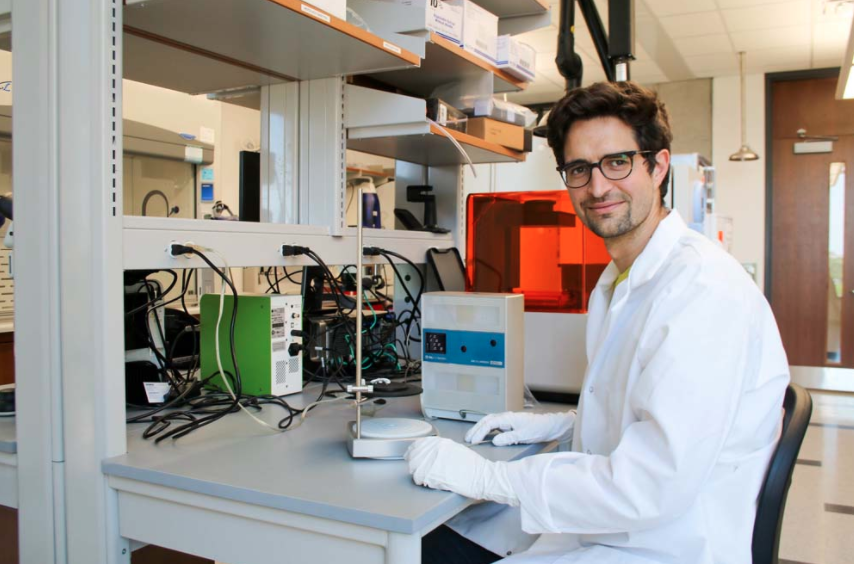Anyone who has met Manuel Rausch is familiar with his energetic personality and passion for teaching. An assistant professor of aerospace engineering, engineering mechanics and biomedical engineering, and affiliated faculty at the Oden Institute, Rausch can often be seen biking across campus or chatting with one of his students around the ASE Building. In fact, he’s been mistaken for a graduate student once or twice himself.
Since joining the Department of Aerospace Engineering and Engineering Mechanics (ASE/EM) in 2017, Rausch has taught several of what are considered to be the department’s most difficult courses: EM 306 (Statics), EM 311 (Dynamics) and ASE 324L (Aerospace Materials Laboratory). He also teaches the graduate course EM 397 (Soft Tissue Biomechanics) which focuses on his current research – a combination of experimental biomechanics and computational modeling. The graduate course is now being offered to senior undergraduate students as well, and this year the class of 20 students included 14 undergraduates.
But when the COVID-19 pandemic arrived and classes transitioned to an online format, Rausch realized quickly that he would need to develop strategies to help keep students engaged. When classes were in person, students were able to participate in lab projects, watch hands-on experiments and ask questions – something that just wasn’t possible remotely. Rausch recreated some experiments using video, but he still wanted to offer something more for students who learn best in a hands-on environment.
“I was really racking my mind, trying to figure out how I could recreate this in-person lab experience,” Rausch said. “I eventually came up with a final project that would allow students to do experiments from home.”
Using real-world tools and practical software, Rausch developed an inexpensive, fully functional materials testing device kit that each student could assemble and use at home along with a group project module.
Rausch designed the final project module to walk students through the full pipeline of material characterization using the device. Each student receives a device packet which contains an aluminum frame, 3D-printed clamps, a mimic tissue sample and a weight balloon. The device can be assembled without tools and is safe and entirely open and free, allowing for a variety of test samples.
Read the rest of this story here.
By Kendra Harris
